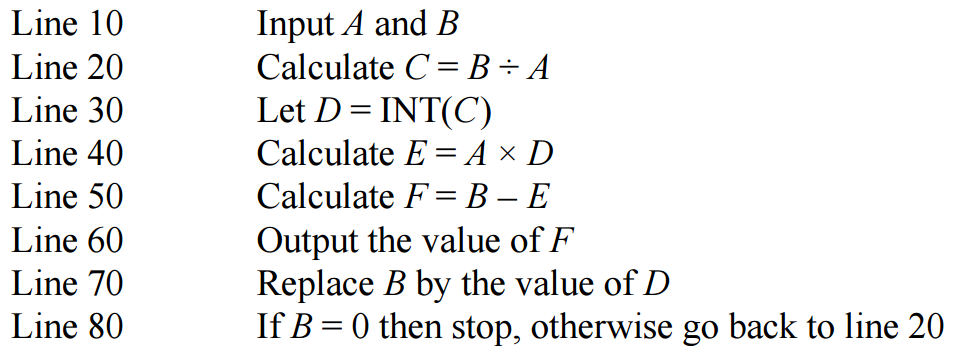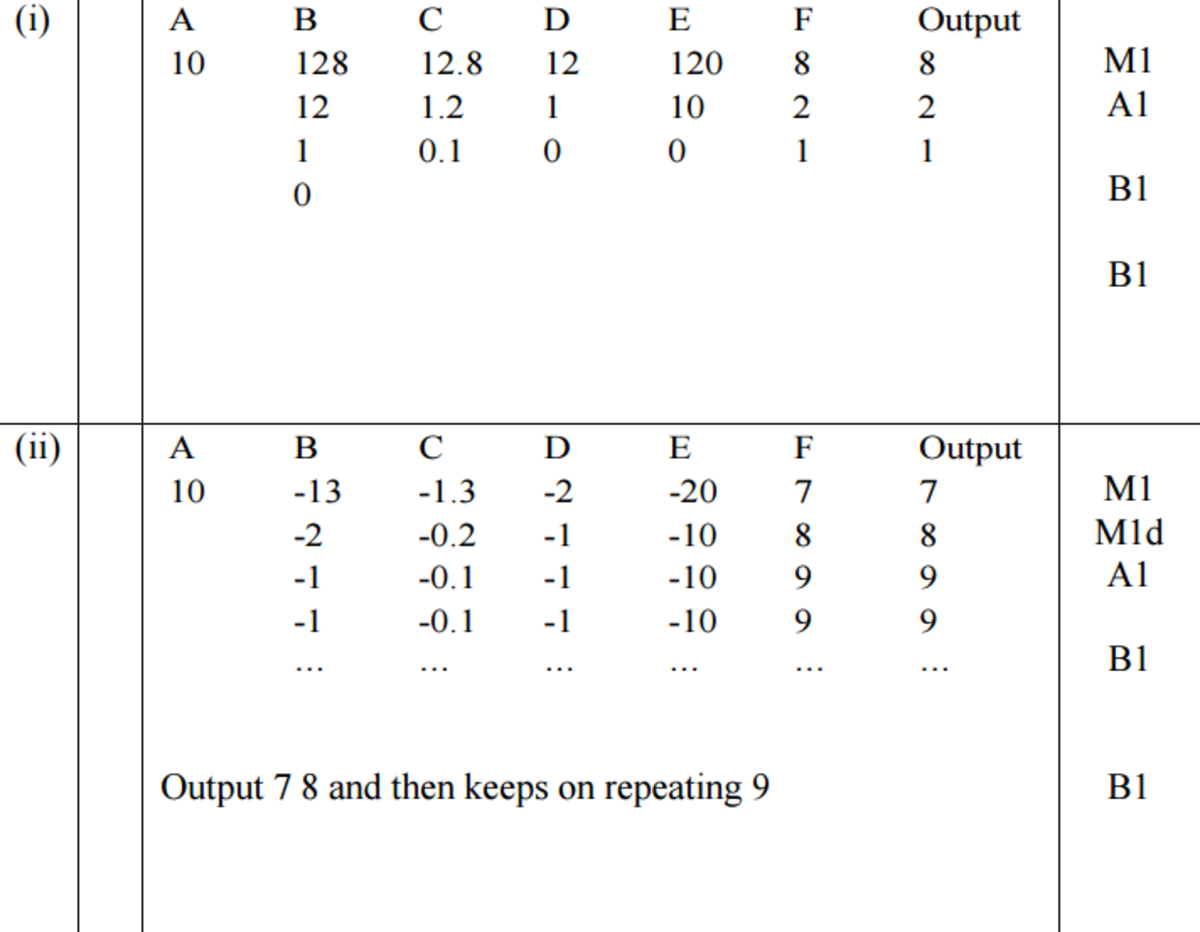OCR A Level: Decision 1 - Miscellaneous Algorithms [January 2012 Q6]
The function gives the largest integer that is less than or equal to C. For example: , , , , .
Consider the following algorithm:

Apply the algorithm using the inputs and . Record the values of , , , , , and every time they change. Record the output each time line 60 is reached.
Show what happens when the input values are and .
Input the sum of all values of outputted in part .
There are 4 marks available for part (i) and 5 marks for part (ii).
In total, this question is worth 12.5% of all available marks in the paper.
This is part of the set OCR A Level Problems .
The answer is 11.
This section requires Javascript.
You are seeing this because something didn't load right. We suggest you, (a) try
refreshing the page, (b) enabling javascript if it is disabled on your browser and,
finally, (c)
loading the
non-javascript version of this page
. We're sorry about the hassle.

The mark scheme for this question: Large Version
Large Version